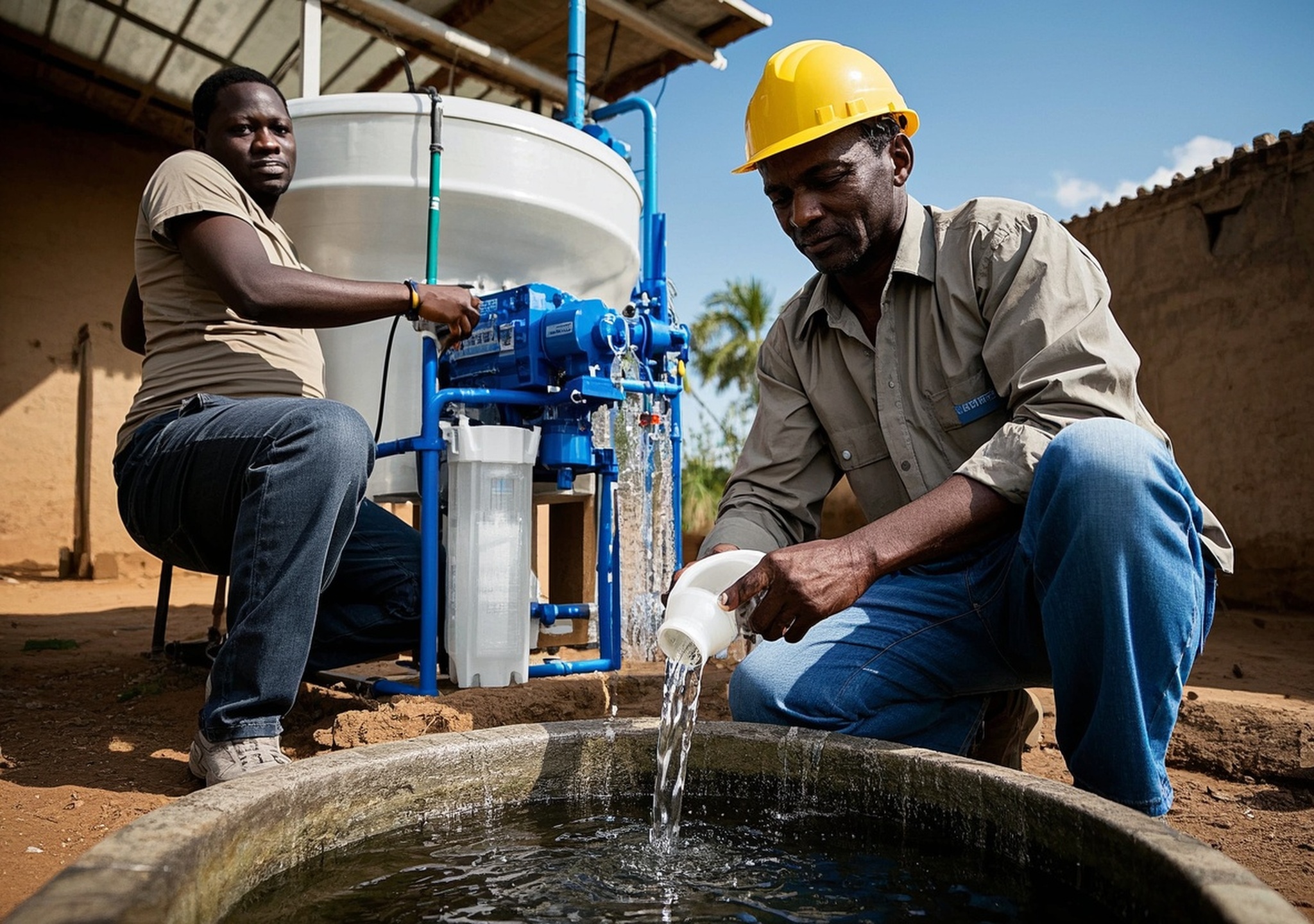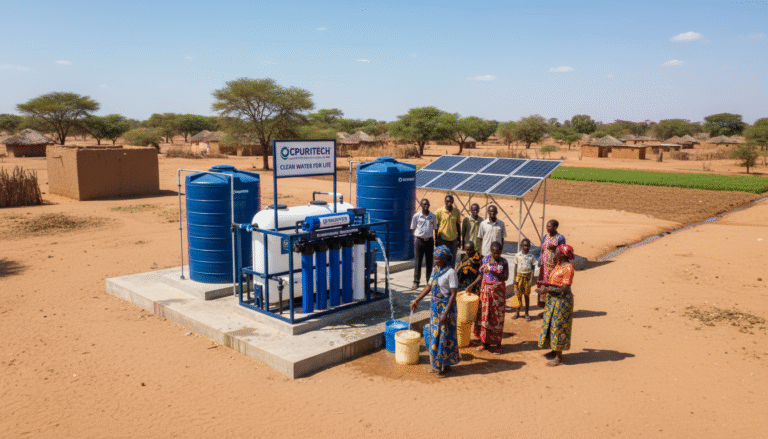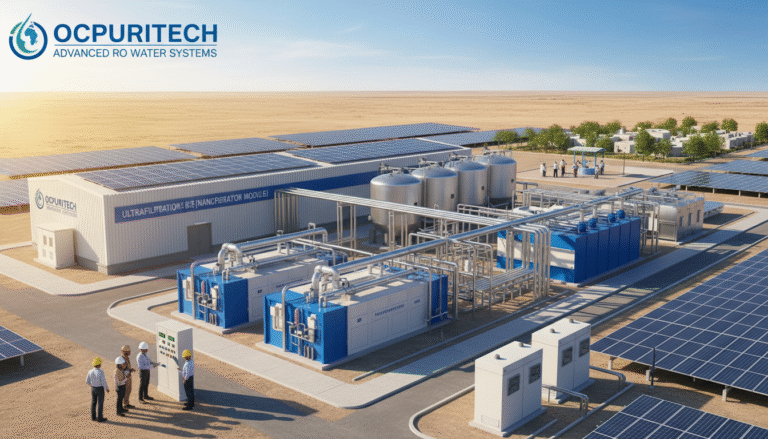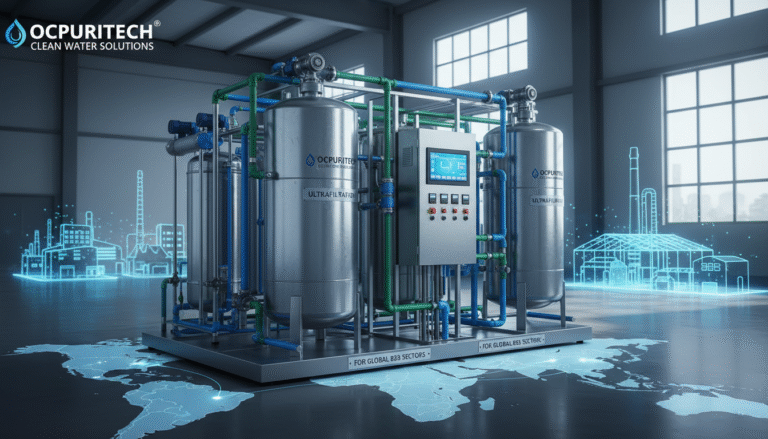Mystery Unraveled: Does a reverse osmosis water system Guarantee Clean Water?

Mystery Unraveled: Does a Reverse Osmosis Water System Guarantee Clean Water?
1. Introduction: The Water Crisis in Water-Scarce African Regions and the Promise of Reverse Osmosis
Across many African countries, water scarcity presents a formidable barrier to public health and economic development. The combination of erratic rainfall, rapid urbanization, and increasing industrial demands has intensified the strain on existing water resources. According to recent studies, a substantial portion of the population relies on unsafe water sources that increase the risk of waterborne diseases and hamper community well-being.
In this context, advanced water purification technologies, particularly reverse osmosis water systems, have emerged as promising solutions. Often regarded as the gold standard for ensuring high-quality drinking water, these systems promise to remove a broad spectrum of contaminants, safeguarding human health and supporting sustainable progress.
This article aims to unravel whether a reverse osmosis water system truly guarantees clean water by delving into its mechanism, standards, practical challenges, and applications, especially focusing on home, commercial, and community water treatment in water-scarce African regions.

2. Product and Technology Overview: Understanding Reverse Osmosis and Complementary Water Purification Systems
2.1 What is Reverse Osmosis Water Purification?
Reverse osmosis (RO) is a water purification technique using a semipermeable membrane to remove contaminants such as dissolved solids, heavy metals, bacteria, and viruses. Under pressure, water molecules are forced through the membrane, leaving impurities behind. This process is highly effective for purifying well water, municipal water, and even seawater.
2.2 Types of Reverse Osmosis Water Systems
Reverse osmosis water purification systems come in various configurations, suited for different applications:
- Home Water Purification Systems Reverse Osmosis: Compact units designed for under-sink or countertop installation ensuring clean drinking water at residential points.
- Whole House Reverse Osmosis Water Systems: Larger-scale systems that treat water at the point of entry, supplying purified water throughout the household.
- Commercial Reverse Osmosis Water Purification Systems: Robust setups tailored for businesses, including food processing, healthcare, and hospitality sectors.
- Portable Reverse Osmosis Water Filtration Systems: Mobile units often used in field applications or emergency situations.
2.3 Complementary Water Treatment Technologies
To address specific water quality issues, reverse osmosis is often paired with:
- Water Softeners: Remove hardness-causing minerals to protect plumbing and improve taste, often integrated prior to RO membranes.
- Ultraviolet (UV) Light Treatment: Provides disinfection by inactivating pathogens that membrane processes might miss.
- Electrodeionization and Distillation: Advanced methods for ultra-purification in critical applications.

3. Regional Water Resource Challenges and Market Demand
In regions such as sub-Saharan Africa, water scarcity is compounded by climate variability and inadequate infrastructure. Many communities rely on untreated surface and groundwater sources that contain elevated levels of total dissolved solids (TDS), bacteria, and chemical pollutants.
The need for reliable water purification technology stems from:
- Elevated waterborne disease incidence negatively impacting health and productivity.
- Limited access to treated municipal water supply, especially in rural areas.
- Industrial growth requiring higher water quality for processes.
- Environmental sustainability pressures demanding efficient water treatment.
Reverse osmosis water systems address these challenges by providing consistent removal of over 95% of contaminants. This capability makes them highly sought after in both home and commercial sectors that demand safe, palatable, and reliable water supplies.
4. Drinking Water Plant Standards and Treatment Processes
To ensure water safety and regulatory compliance, reverse osmosis systems must adhere to stringent standards. The NSF/ANSI 58 standard is widely recognized for RO drinking water systems, specifying requirements for materials, design, and performance, especially in reducing TDS and specific contaminants. The EPA’s WaterSense program also utilizes NSF/ANSI 58 as a benchmark for energy efficiency and point-of-use system performance.
Moreover, water treatment plants in affected regions often follow comprehensive guidelines as outlined in authoritative resources like the Water Treatment Plant Design, Fifth Edition by AWWA and ASCE. The integrated treatment process typically includes:
- Pre-treatment: Sediment filtration and chemical dosing to protect membranes.
- Softening: Addressing hardness to mitigate scale buildup.
- Reverse Osmosis Membrane Filtration: Core purification removing dissolved solids and microorganisms.
- Post-treatment: pH adjustment, remineralization, and disinfection (e.g., UV light).
- Monitoring and Control Systems: Ensuring operational efficacy and water quality compliance.
5. Customized Solutions and Engineering Design for Water Treatment Facilities
Engineering a reverse osmosis water system demands tailoring the design to specific community sizes, water sources, and end-use requirements. For example, home systems might focus on easy installation and maintenance with integrated filters, while community and commercial plants prioritize scalability, redundancy, and automated controls.
5.1 Pre-Treatment and Softening Integration
Protecting sensitive RO membranes starts with thorough pre-treatment. In my experience designing water treatment for a rural African community, implementing modular softeners upstream of the RO significantly increased membrane lifespan by reducing calcium and magnesium scale. This approach also lowered operational costs over five years.
5.2 Monitoring and Quality Assurance
Advanced sensors and IoT-enabled controllers provide real-time data on key parameters such as TDS, pH, and flow rates. In a commercial installation I oversaw, the inclusion of remote monitoring led to a 20% reduction in downtime and quicker response to system inefficiencies.
5.3 Sustainability and Energy Efficiency
Newer RO systems incorporate energy recovery devices and optimized pump designs. In one project collaborated with local engineers, energy consumption was cut by nearly 30%, improving economic viability within energy-constrained environments.

6. Real-World Application Examples and Benefits
6.1 Community Water Treatment Plant in Kenya
In a Kenyan rural project, we deployed a combined softening and reverse osmosis water treatment plant designed to serve 10,000 residents. The system operated on local borehole water with high salinity. Over 18 months, reports showed reduced instances of gastrointestinal diseases by 40%, complemented by community outreach programs on water hygiene.
6.2 Commercial Reverse Osmosis System in Food Processing
A beverage manufacturing client in South Africa integrated a commercial reverse osmosis water purification system to meet ISO water quality standards. Product quality consistency improved, while water consumption efficiency surged by 25%, reflecting in cost savings.
6.3 Household RO Systems Adoption
We have witnessed an increasing trend of adopting under-sink and countertop reverse osmosis water purification systems in urban African households. Customers report improved taste, odor removal, and peace of mind regarding contaminants such as lead, nitrates, and bacteria often present in municipal water.
7. Conclusion and Call to Action
To conclude, a reverse osmosis water system is a powerful and effective method to guarantee clean water when properly designed, installed, and maintained. However, system success depends on adherence to standards such as NSF/ANSI 58, thoughtful engineering tailored to local conditions, and integration with complementary treatment methods.
Communities, commercial operators, and households in water-scarce African regions stand to gain immensely from these technologies. Collaboration with experienced water treatment professionals is crucial for customizing solutions and ensuring sustainable operation.
If you are seeking to implement a reverse osmosis water purification system or require expert consultation on water treatment plant design, contact us to explore tailored solutions that address your unique water quality challenges and contribute positively to health and development goals.
References
- NSF International – NSF Standards for Water Treatment Systems
- ANSI (American National Standards Institute) – NSF/ANSI 58-2022: Reverse Osmosis for Drinking Water
- American Water Works Association (AWWA) / American Society of Civil Engineers (ASCE) – Water Treatment Plant Design, Fifth Edition
- U.S. Environmental Protection Agency (EPA) – WaterSense Specification for Point-of-Use Reverse Osmosis Systems




